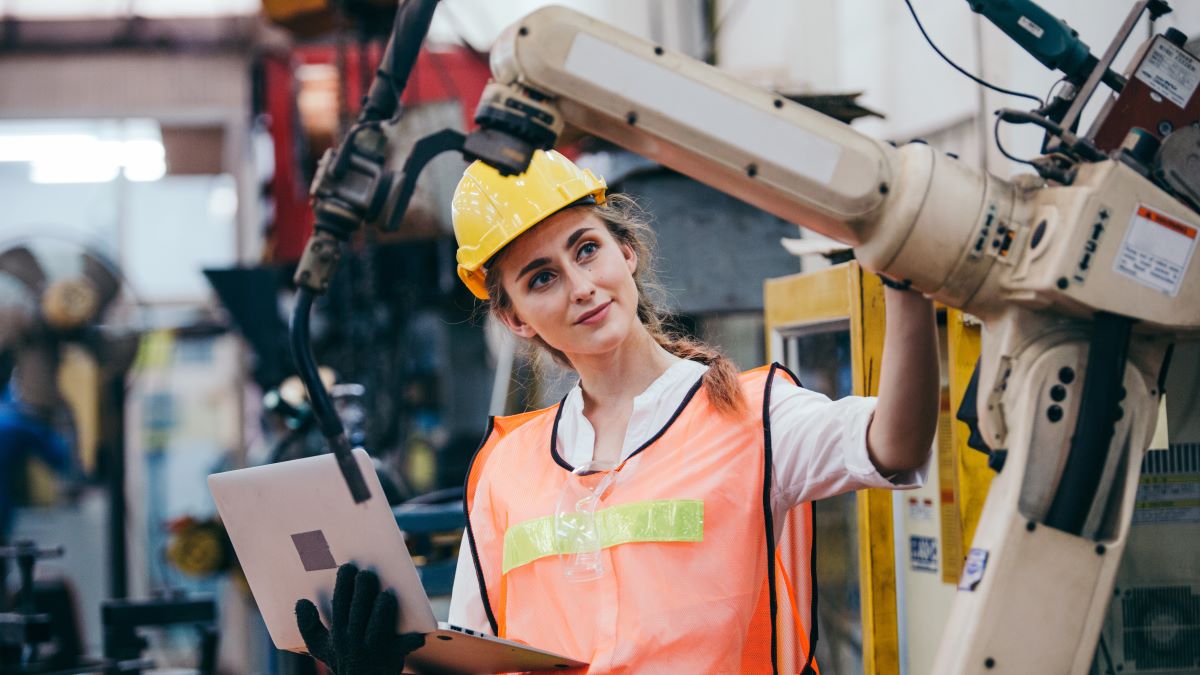Key points
- U.S. companies are using robots more often to perform dangerous or repetitive tasks.
- The increasing number and new types of robots in the workplace has created a knowledge gap related to robotics and worker safety and health.
- NIOSH is providing scientific leadership to address the safety and health of workers who use, wear, or work near robots.

Why it's important
Robots have existed in the workplace for many years, but their numbers and capabilities are quickly growing. Robots can enhance worker safety, health, and well-being. However, there are also safety concerns.
Types of robots
Robots are machines or automated technologies that can perform a series of actions. They can do everything from drive cars to perform surgery. You can find various types of robots in today's workplaces:
Traditional industrial robots work in robotic cells and cages away from human workers.
Professional service robots assist workers in completing tasks. These include:
- Remotely controlled or autonomous vehicles
- Unmanned aerial vehicles (UAVs) or drones
Collaborative robots directly interact with people. These include:
- Wearable robotics or powered exoskeletons
- Co-existing or mobile robots that can navigate through the workplace
Impacts
Robots can improve worker safety, health, and well-being by doing work in high-risk environments. For example:
- Robots could inspect offshore oil rigs while people remain safely on shore.
- Drones might allow farmers to apply pesticide without exposure to chemicals.
- Service robots may help healthcare workers safely lift patients without the risk of musculoskeletal injuries.
- A fleet of self-driving vehicles could reduce motor vehicle crashes among delivery workers.
Risks
Robots can improve safety and productivity in the workplace. However, there are also potential hazards associated with using robot systems. Hazards to workers might include:
- Struck-by or caught-between hazards
- Crushing and trapping
- Slipping, tripping, and falling hazards
- Electrical hazards3
Emerging risks
The increasing use of robots that work in close proximity to people brings new risks to the workplace. These emerging risks may not yet be fully understood. Robots working near people could:
- Injure workers through unexpected contact
- Distract workers from hazards
- Cause workers mental stress because they don't trust the robot's capabilities or are concerned about job loss
Safety and health professionals must ensure that the use of robots does not create additional hazards or risks to workers as technology advances and workplace applications change.
What's being done
The NIOSH Center for Occupational Robotics Research is addressing the safety, health, and well-being of today's workers who use, wear, or work near robots.
Resources
- NIOSH Science Blog: Robotics
- OSHA Technical Manual: Industrial Robot Systems and Industrial Robot System Safety
- See the NIOSHTIC-2 database search results on robotics.
- NIOSHTIC-2 is a database of occupational safety and health publications funded in whole or in part by NIOSH.
- NIOSHTIC-2 is a database of occupational safety and health publications funded in whole or in part by NIOSH.
- Layne, LA [2023]. Robot-related fatalities at work in the United States, 1992-2017. American Journal of Industrial Medicine 66(16): 454-461.
- International Federation of Robotics [2023]. World Robotics 2023 [Presentation].
- Occupational Safety and Health Administration [2022]. Industrial Robot Systems and Industrial Robot System Safety. OSHA Technical Manual Section IV: Chapter 4.
